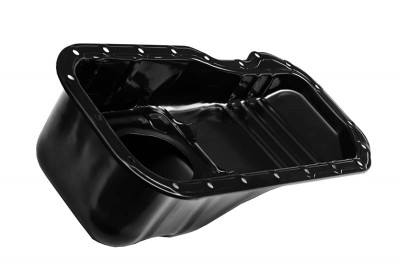ATEQ is Available to Provide Consulting and Leak Testers For Automotive Oil Pan Leak Testing Applications.
The oil pan is a reservoir for oil at the bottom of an engine used lubricate, clean and cool moving parts. The pan is holds about 4-6 quarts of oil and is typically made of steel or aluminum. A drain plug on the bottom can be removed to drain oil. Oil pans can be one source of leaks an engine. Gaskets or seals installed where the pan attaches to the engine block may wear out and allow leaks. Drain plugs can leak if they are over-tightened or, in some cases, if washers aren’t replaced when the oil is changed. Pans also can be damaged during off roading if something hard hits the pan.
Is it is important to do oil pan leak testing to make sure all the plugs, seals and gaskets are tight and that there are no manufacturing defects or cracks in the pan itself. An ATEQ F series differential pressure decay instrument can be used to perform a manual direct leak test on the oil pan. Since the pan is completely open on one side and there are openings around the pan, the open side and all except one opening would have to be capped or blocked off in order to hold the air in when the ATEQ leak tester pressurizes the test part (and also a reference part if differential pressure decay testing is used). There should also be separate leak tests to test each seal and plug on the pan to make sure connections are secure.
ATEQ has developed solutions for hundreds of different automotive leak testing applications for well known OEM manufacturers over the last 40 years. Whether you are leak testing oil pans, cylinders, full engines, EV battery packs, catheters, pacemakers, or a smartphone, ATEQ can work with you to provide efficient leak testers and develop integrated oil pan production leak and flow testing solutions.
Contact Us to speak with an expert ATEQ Application Engineer in your area.
